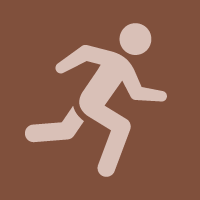Topic Menu
► Topic MenuTopic Editors


2. Department of Psychology, University of Chinese Academy of Sciences, Beijing 100049, China
Physical Exercise Impacts on Human Physical and Psychological Health

Topic Information
Dear Colleagues,
According to the WHO, health represents a state of complete physical, mental and social well-being. Multiple guidelines encourage physical exercise as a non-pharmacological intervention for individuals of all ages to improve health, without the absence of side effects. Sufficient evidence has indicated that physical exercise is associated with lower morbidities and mortality rates. Nevertheless, further understanding the effect of physical activity on specific systems (musculoskeletal system, nervous system, respiratory system, circulatory system, etc.) is still a demanding and major public health interest. In addition, the positive effects of physical exercise vary according to its different parameters and targeted population. Verifying the optimal physical exercise patterns for populations with different pathological issues are equally essential.
For this Topic, we encourage researchers to submit high-quality observational, experimental and review studies that provide evidence about the biomechanical, physiological and psychological effects as well as the underlying mechanisms of physical exercise. High-quality randomized controlled trials investigating the impacts of physical exercise are particularly welcomed. Meanwhile, we are also interested in literature reviews summarizing the underlying improvement mechanism of physical exercise, longitudinal cohort studies or systematic reviews with meta-analyses.
Prof. Dr. Xueqiang Wang
Dr. Li Li
Prof. Dr. Li Hu
Topic Editors
Keywords
- physical exercise
- physical health
- psychological health
- chronic disease
- biomechanism
- physiology
- effectiveness
- mechanism
Participating Journals
| Journal Name | Impact Factor | CiteScore | Launched Year | First Decision (median) | APC |
|---|---|---|---|---|---|

Healthcare
|
2.7 | 4.7 | 2013 | 21.5 Days | CHF 2700 |

Hygiene
|
- | 2.6 | 2021 | 18.1 Days | CHF 1000 |

Journal of Clinical Medicine
|
2.9 | 5.2 | 2012 | 17.7 Days | CHF 2600 |

Life
|
3.4 | 6.0 | 2011 | 19.3 Days | CHF 2600 |

Sports
|
2.9 | 4.1 | 2013 | 18.7 Days | CHF 1800 |

Preprints.org is a multidisciplinary platform offering a preprint service designed to facilitate the early sharing of your research. It supports and empowers your research journey from the very beginning.
MDPI Topics is collaborating with Preprints.org and has established a direct connection between MDPI journals and the platform. Authors are encouraged to take advantage of this opportunity by posting their preprints at Preprints.org prior to publication:
- Share your research immediately: disseminate your ideas prior to publication and establish priority for your work.
- Safeguard your intellectual contribution: Protect your ideas with a time-stamped preprint that serves as proof of your research timeline.
- Boost visibility and impact: Increase the reach and influence of your research by making it accessible to a global audience.
- Gain early feedback: Receive valuable input and insights from peers before submitting to a journal.
- Ensure broad indexing: Web of Science (Preprint Citation Index), Google Scholar, Crossref, SHARE, PrePubMed, Scilit and Europe PMC.


